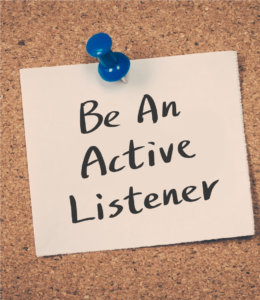
Communication: The Power of Being Present
In recent days and months, I have heard many people talk about how they do not communicate with their spouse, children, or work. How often do you spend the time around us and not communicating with them? Polls have shown that we devote more time to an electric device than talking to the person we are around. Like the rest of you, I want to binge the latest season on Netflix. I hear the bing on my phone, and I have to check to see who posted about their pet, the food, or the latest video. So how do we disconnect from the device to connect to those around us? There are simple steps like having a now device dinner with the family. But if we don’t know how to communicate, you will fill this time with awkward silence and some hateful stares at one another. So here are four steps to help increase your communication skill not only at home but also at work. Will these steps solve all your communication problems? No, but if you comment to applying them. You can see improvement in your business and home life.
“People My Hear your words but they feel your attitude.” – John C Maxwell

STEPS
